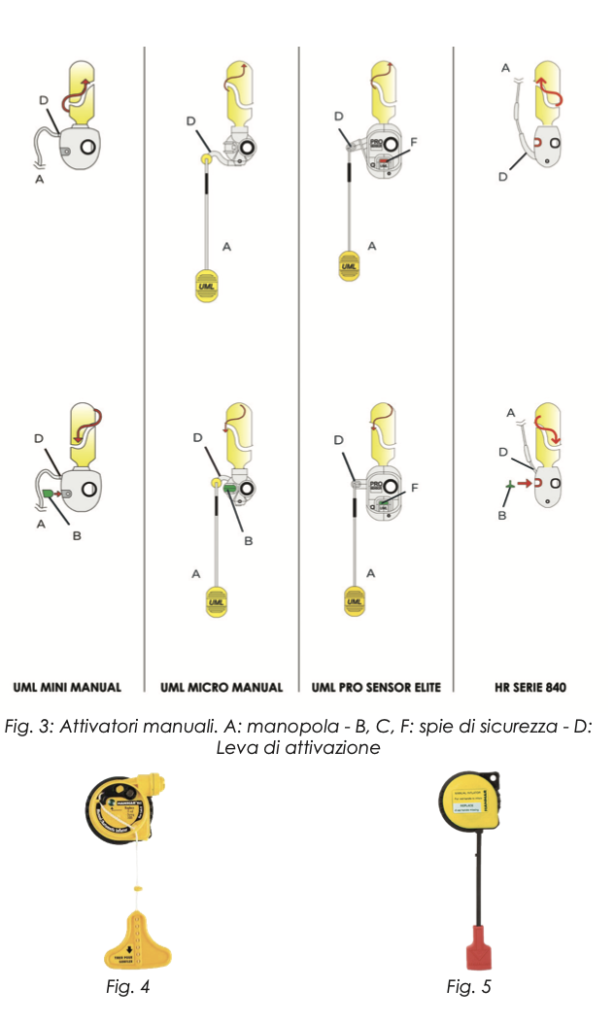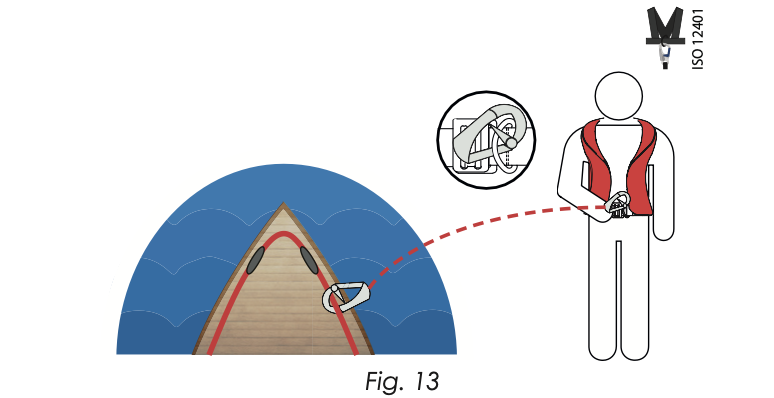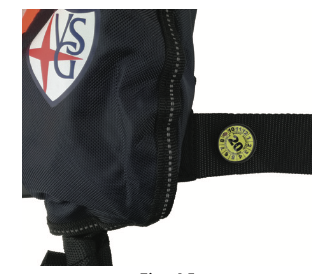-
What are the differences between the various activation systems?
The following images illustrate the activation systems used for VSG devices, broken down into:
- Automatic/manual activators with water-soluble system – UML MK5, UML PRO SENSOR ELITE, HALKEY ROBERTS ALPHA 9000 (Image 2).
- Manual-only activators – UML MINI MANUAL, UML MICRO MANUAL, UML PRO SENSOR ELITE, HALKEY ROBERTS Series 840 (Image 3).
- HAMMAR hydrostatic activator – automatic/manual (Image 4) and manual-only (Image 5).

-
How long Dows the device last?
The service life of this device depends on the conditions in which it is kept and used – please follow the below instructions carefully.
To prolong the life of the device, VSG recommends that the first inspection be carried out within 24 months from the date of purchase and in any case, within 36 months from the date of manufacture, whilst subsequent revisions should be carried out at least every two years. Inspections must be conducted at Authorised VSG Inspection Stations.
-
Does the device have an expiry?
If the jacket is subject to regular periodic inspections with a positive outcome, it can continue to be used.
-
When to should an inspection be carried out?
PLEASE NOTE: Only by sending the device and its technical characteristics to VSG or an Authorised VSG Inspection Station can the correct restoration procedure be guaranteed.
For all CE ISO certified jackets, VSG recommends carrying out the first inspection within 24 months from the date of purchase and in any case, within 36 months from the date of production, then carrying out subsequent revisions at least every two years. For SOLAS MED-certified jackets, inspections must take place every 12 months. Inspections must be carried out at VSG or Authorised VSG Inspection Stations. The Authorised VSG Inspection Station will fill out the service label attached to the product and fill in the date on the jacket with the date of the next service. An Inspection Certificate will also be issued, listing the operations carried out. Any inspection not respecting the aforementioned procedure cannot be considered valid. For a list of Authorised Inspection Stations, please contact VSG directly.
-
What maintenance does the device require?
After use and activation of the device, it is recommended to contact an Authorised VSG Inspection Station to have it restored.
The following steps can be performed to restore the device:
- Deflate the device as described in the previous section and rinse in fresh water. Do not use solvents or detergents to clean any traces of oil or dirt – only utilise a solution of fresh water and mild soap. Do not use a washing machine or dryer nor spin-dry. For use without the activation of an automatic device, remove the canister and water-soluble cartridge prior to cleaning. After washing, allow the device to air dry completely, out of direct sunlight.

After use - Check the chamber and/or housing for damage or signs of excessive abrasion that could cause malfunction.
- Check the integrity of the straps, buckles, seams and zips, if present.
- Check the seal of the chamber by fully inflating it and examining the device after 12 hours.
- Replace the water-soluble cartridge each year in the case of professional use of the device or every 2 years for recreational use. The water-soluble cartridge must not be more than two years old at the time of purchase.
PLEASE NOTE: During maintenance operations, in the event of damage, air leaks, malfunctions or breakages, do not attempt to repair or modify the device but contact an Authorised VSG Inspection Station immediately.
The quality, care and maintenance of the safety device components are vital in limiting their normal deterioration over time. On the label applied to the product, there may be instructions and advice on the time limit within which the characteristics of the products remain unchanged.
STORAGE AND USAGE ENVIRONMENT
Store the device in a dry and ventilated place since moisture can penetrate within and cause activation.
The device has been tested to operate between -30° C and 60° C, however prolonged exposure to very low temperatures can cause incomplete inflation, in which case it is likely that inflation will have to be done via the blowing tube.

These devices can be used with any integrated safety line, of which VSG offers a broad selection in the catalogue.
However, it is important to bear in mind that which follows.
- Jackets with an integrated harness or safety line are designed to prevent falling overboard but not to protect against falls from a height.
- The integrated harness and safety lines can result in harsh recoil and must be anchored to robust coupling points.
- INSPECTION
The manufacturer VSG recommends that the first inspection be carried out within 24 months from the date of purchase and in any case, within 36 months from the date of manufacture, whilst subsequent revisions should be carried out at least every two years. Inspections must be conducted at Authorised VSG Inspection Stations.
The Authorised VSG Inspection Station will fill out the service label attached to the product (Image 14) and fill in the date on the jacket (Image 15) with the date of the next inspection. An Inspection Certificate will also be issued, listing the operations carried out.


-
Can the device be accidentally inflated?
The type of activation, the positioning of the activator on the buoyancy chamber and the construction of the device’s external housing all guarantee the maximum safety of the system. However, in rare cases, the jacket may activate accidentally. Almost always, such accidental activations are caused by a lack of maintenance/inspection of the jacket or incorrect positioning on board.
-
Does the tablet have an expiry date?
The tablet mounted on the life jacket has a life of 24 months for CE ISO jackets and 12 months for SOLAS MED jackets. We recommend replacement each year in the event of frequent use or prolonged exposure to the elements.
-
Does the canister have an expiry date?
The canister should be replaced at least every 10 years for CE ISO jackets and every 5 years if fitted on SOLAS MED jackets. Any signs of oxidation, corrosion, dents or loss of weight are indicators that the canister must be replaced prior to such dates.